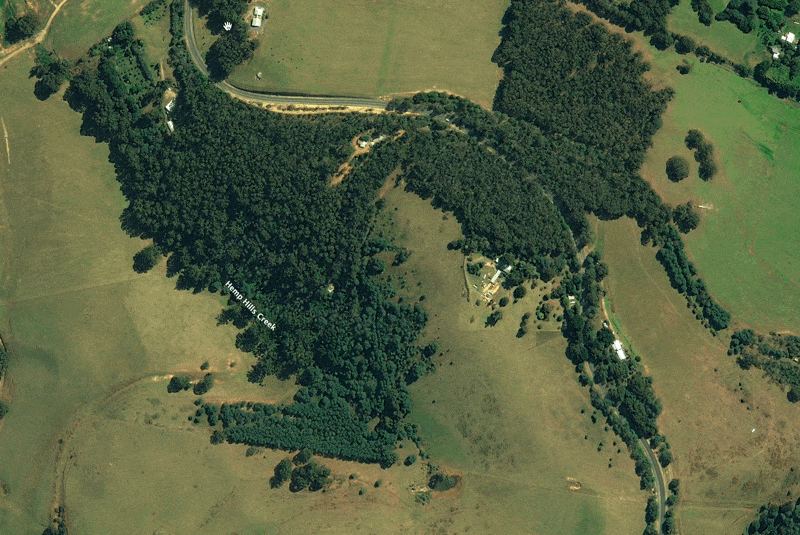Two main forests exist—an older, more established Messmate forest along the roadside and a younger, self-rewilded Acacia forest. These pioneers are showing signs of the end of life, and many are dead or dying—the opportunity to reforest with more indigenous species.
Two main forests exist—an older, more established Messmate forest along the roadside and a younger, self-rewilded Acacia forest. These pioneers are showing signs of the end of life, and many are dead or dying—the opportunity to reforest with more indigenous species.
North East Messmate forest
Satellite images going back to 1985 see this forest well established, and I speculate that it has been that way for much of the 20th century, if not longer. Images from the railway line in the early 20th century show the western side of the property covered in eucalypts, which were later cleared by the 1940s.


Western Acacia Forest
The Western Acacia forest has been reclaiming the pasture since the mid 1970s, having been cleared in the 1940s and 50s, and still cleared in 1962.


The satellite progression starts in 2010 through to 2024. Earlier low resolution image from 1985 suggests this forest did not exist on the eastern side of the creek at that time.

Insights and Implications—Opportunity to reforest with indigenous species as older forests decline, and manage invasive species.
The younger self-re-wilded Acacia forest is exhibiting signs of aging with many trees dead or dying. This presents a natural transition point for ecological succession and reforestation efforts.
The decline of pioneer Acacia trees offers a timely opportunity to introduce more indigenous tree species. Planting native species would enhance local biodiversity and support a healthier, more resilient ecosystem.
It's crucial to select tree species carefully for reforestation. This selection should prioritize species that contribute positively to the local ecosystem and avoid those with potential to become invasive. This strategic approach ensures that reforestation efforts are both ecologically beneficial and sustainable.
The presence of invasive blackberries, particularly around key areas like the dam and forests, poses significant ecological challenges. Actively managing and removing these invasives will improve access, allow native vegetation to thrive, and enhance overall plant health and biodiversity on the property.
ACTIONS—Reforest with indigenous species, manage invasive species.
Systematically replace dying Acacia trees with diverse native species to enhance ecological diversity and resilience.
Actively remove invasive blackberries to reduce competition and encourage native plant growth.
Implement a strategic planting approach to ensure continuous forest regeneration with native species.
